10 Signs of an Insecure Husband

Assamese weddings are inspiring with its simple yet meaningful rituals, deeply rooted in the vibrant Assamese culture. Locally known as ‘Biya’, the Assamese wedding ceremonies span for about 3 days with varied and unique traditions.
The event is well-known for its soberness, mostly when it comes to performing the wedding rituals. Like in every Hindu wedding, Assamese weddings also have pre-wedding, wedding, and post-wedding rituals, accompanied by the traditional Assamese artforms. Come; let’s see what all happens in an Assamese wedding ceremony.
Pre-Wedding Rituals in Assamese Marriage
Juran Diya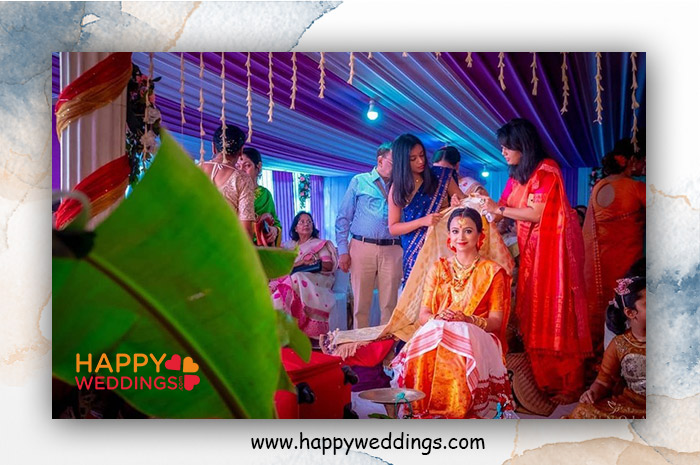
Image Courtesy: EUNOIA Weddings
This is the very first pre-wedding ritual that mostly takes place a day before the actual wedding day. As part of this ceremony, the groom’s mother visits the bride’s house and other female members. Traditional Assamese rituals are performed during this event in which the bride’s mother welcomes the groom’s family, holding a brass bowl having betel leaves and nuts. The bride is then brought to the venue, and the groom’s mother gifts her sweets and other valuables like clothes and jewels.
Tel Diya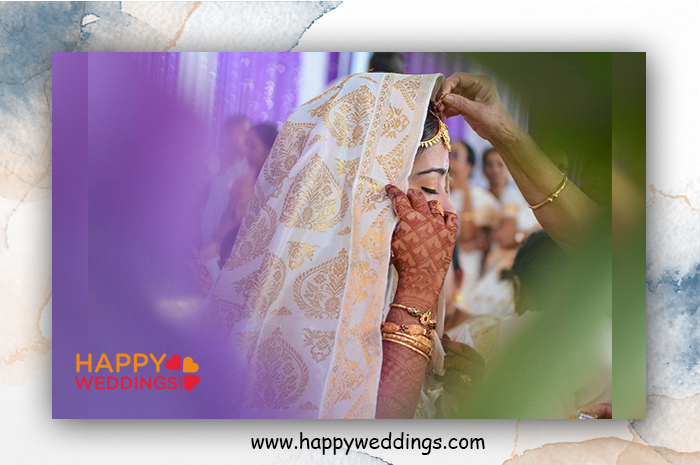
Image Courtesy: Bikash Raj Borah Photography
This is an age-old custom where the bride’s mother-in-law puts a ring along with a betel nut on the hair partition of the bride. The mother-in-law carries a tin of oil with her, and this oil is then poured on the ring. Sindoor (Vermillion) is then applied on the forehead of the bride. It is also performed by the mother-in-law, and the bride is supposed to wear the sindoor right from this moment. Other bridal goods are also presented during this ritual.
Wedding Day Rituals
Pani Tula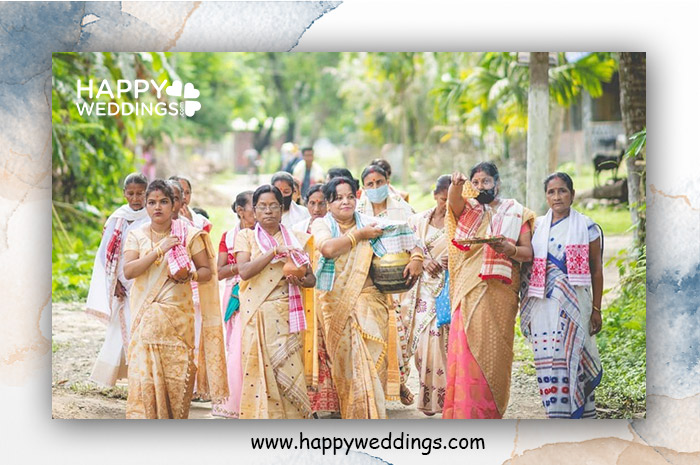
Image Courtesy: Momentra Creations
Pani Tula or Pani Tola is a beautiful Assamese wedding day ritual in which both the mothers of the bride and the groom collect water from any river near their homes for the bride and the groom to have a holy bath. While the mothers gather water, those who accompany them will sing Biya Naam songs to make the ritual tuneful. After they carry water, all of them will go back without looking back.
Daiyan Diya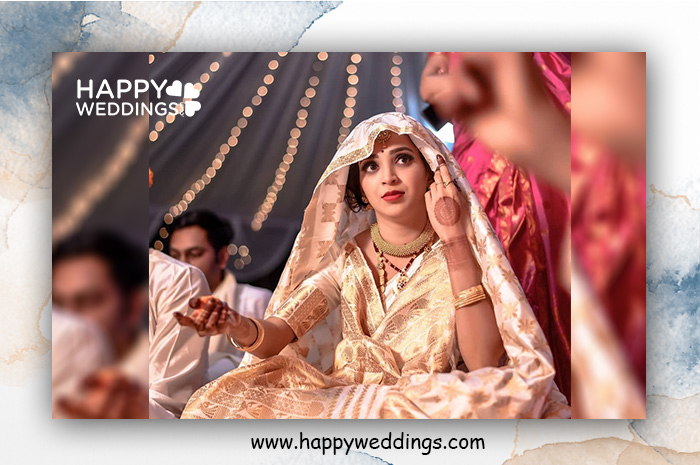
Image Courtesy: Parag Rane Photography
In this ritual, curd is carried to the bride’s house by the groom’s family early in the morning. The bride will have half of the curd, and the rest is sent back to the groom, which he drinks.
Nau Purushor Sharddho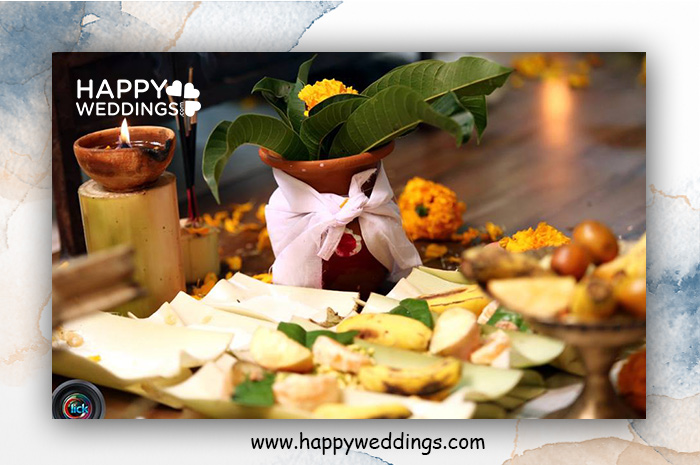
Image Courtesy: guwahatiexpress.com
The ancestors are remembered during this ritual. Both the families pay their tribute to the bygone members of their family. The bride, as well as the groom, seek the blessings of the ancestors.
Nuoni or Ceremonial Bath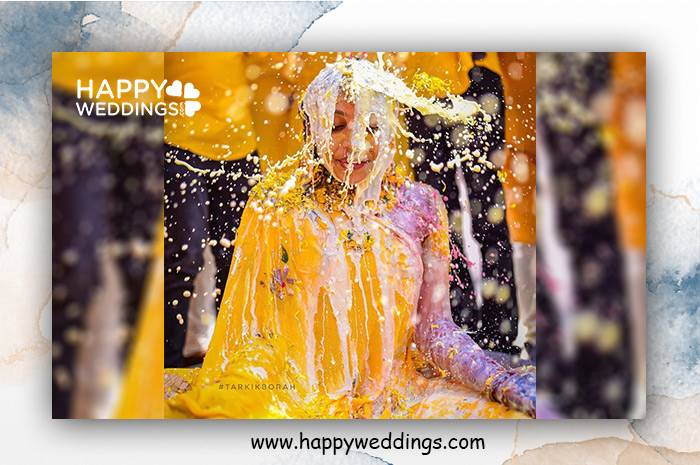
Image Courtesy: Tarkik Borah Photography
The water collected by the mothers will be used for this ritual. Both the bride and the groom have a ceremonial bath, and the ritual is known as Nuoni. Oil, curd, and turmeric paste are applied to the bride and the groom while receiving a ceremonial bath.
Reception
Image Courtesy: www.weddingwire.in
In other Hindu wedding ceremonies, a reception is held after the marriage. Interestingly, the Assamese people celebrate the reception in advance. The bride is carried to the stage, and she will be draped in a beautiful saree and jewels. She is supposed to greet the guests first, and when the groom arrives, she will leave for her room.
The Arrival of the Groom
Image Courtesy: Rainbow Frames
In the morning, the groom gets ready and receives a blessing from his mother. He then arrives at the venue, along with his family and friends. He will be wearing the wedding attire presented by the bride’s side. He is given a warm welcome by the bride’s party with lots of fun-filled activities.
Dora Aaha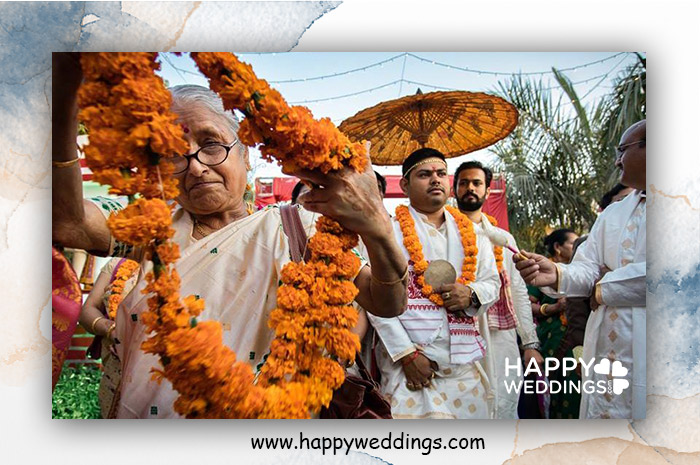
Image Courtesy: guwahatiexpress.com
In this ritual, the groom and his family pay a sum of money to the bride’s family. This is a custom followed in Assamese weddings, and the groom is allowed to enter inside the venue only after he pays this amount.
Bhori Dhuwa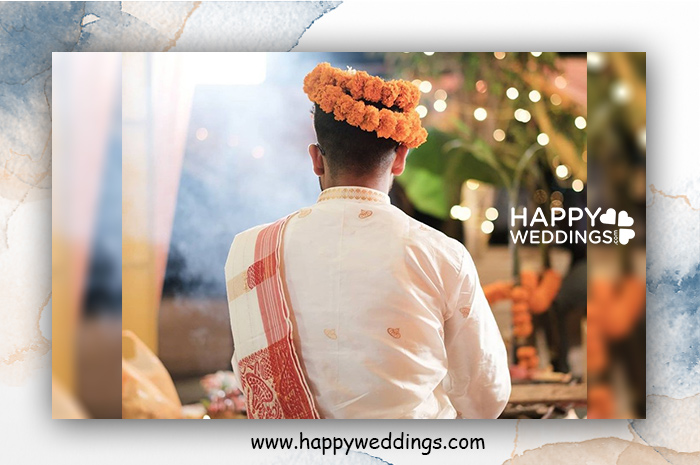
Image Courtesy: Pranjal
The groom gets a grand reception at the venue where the bride’s mother performs aarti, and the bride’s sister washes his feet. He is then lifted by the bride’s brother to take him to the stage as he cannot set his foot on the ground.
Register with us! 100% Verified Profiles
Biya (The Wedding Ceremony)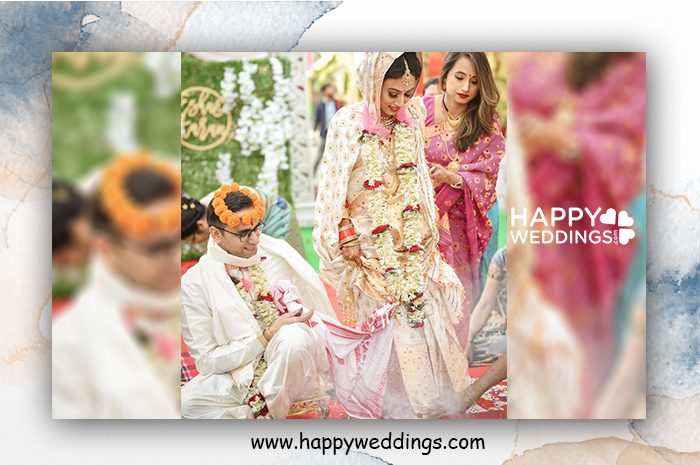
Image Courtesy: Tarkik Borah Photography
The bride is taken to the mandap by her maternal uncle and siblings. The groom will be sitting at the stage, in front of the mandap’s holy fire set. The priest chants mantras while the couple exchange garlands. Various rituals are then performed as per Vedic traditions.
Kanyadaan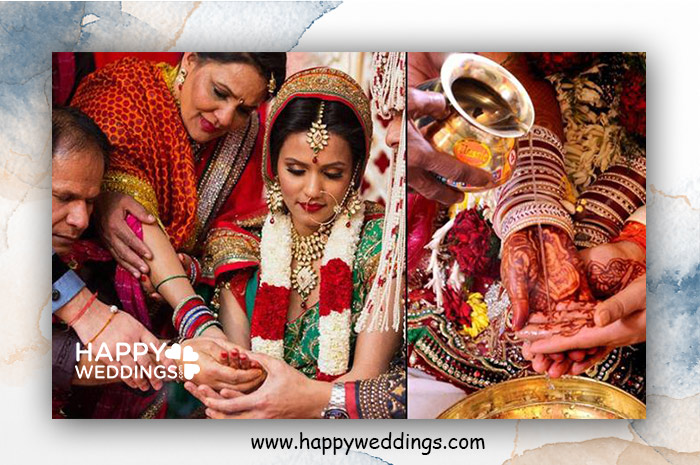
Image Courtesy: unknown
The bride’s father performs this ritual as he gives away his daughter to the groom and asks him to look after his daughter with love, care, and affection. Meanwhile, the bride’s brother takes a handful of puffed rice, placed on his sister’s hand. She offers the rice to the sacred fire. Jura Naam, a traditional song, is sung by all the family members and friends during this time.
Saptapadi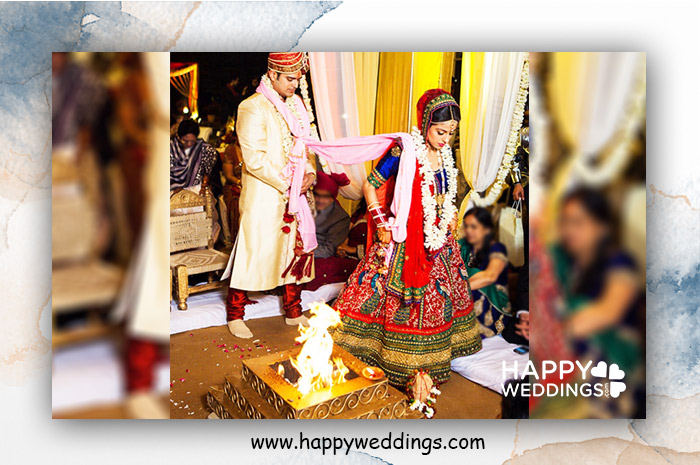
Image Courtesy: lawhousekolkata.com
The couple takes seven rounds around the sacred fire chanting marriage vows that they should follow once they start their lives. Once this gets completed, the bride is asked to step on betel leaves with her right foot.
Aashirbaad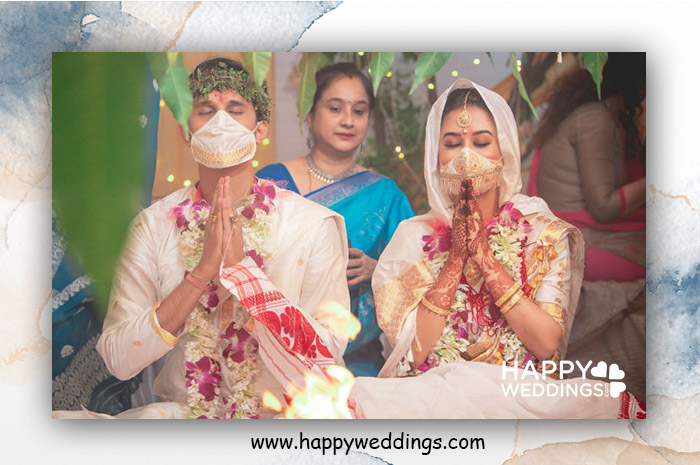
Image Courtesy: beforeprint.in
Elders, as well as other guests, bestow their blessings on the newlywed during this ritual.
Post-Wedding Rituals
Khel Dhemali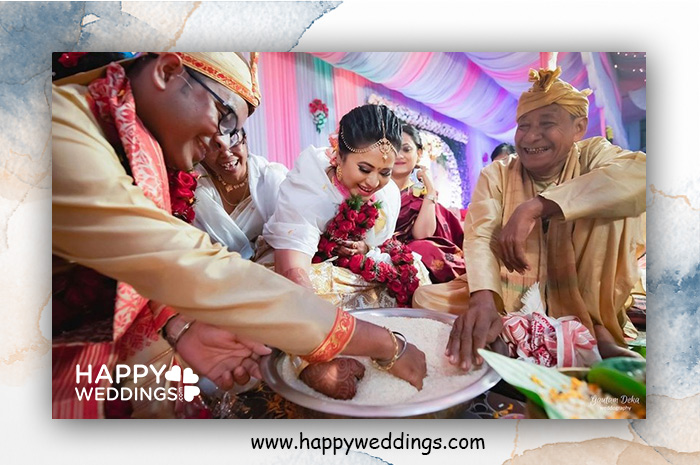
Image Courtesy: Gautam Deka Photography
There are some traditional rituals to be followed once the marriage gets over. The couple, along with family members, gets indulged in these fun-filled activities.
Maan Dhora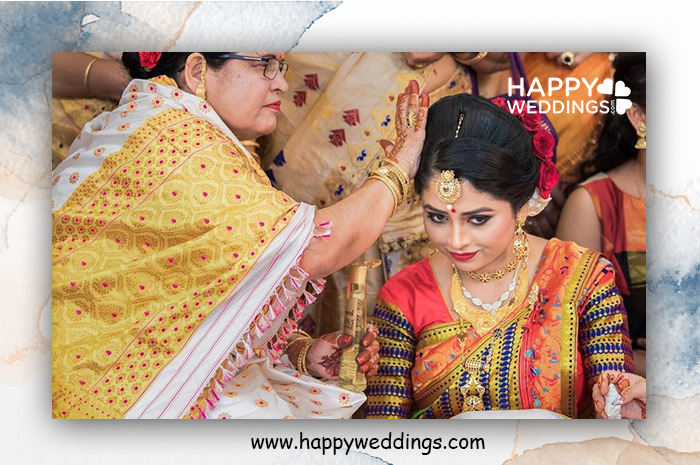
Image Courtesy: Gautam Deka Photography
Before leaving for the groom’s house, the couple seeks the blessings from both the families’ elders. The couple is also presented with valuable gifts by relatives during this ritual.
Bidaai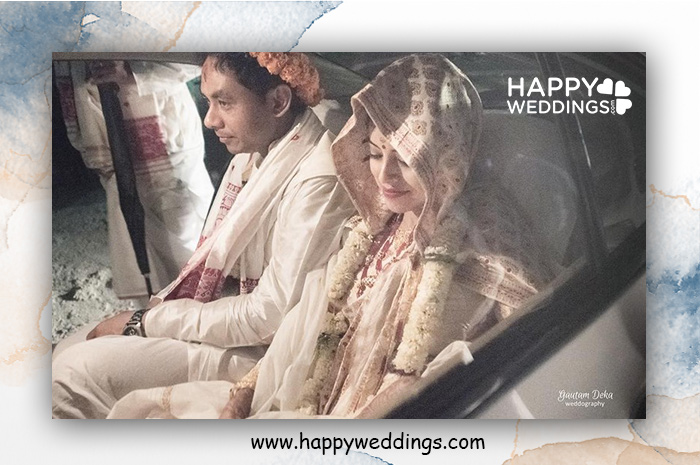
Image Courtesy: Gautam Deka Photography
The bride bids adieu to all her family members during this ritual. She will throw rice over her shoulders as a gesture of paying the debt of her upbringing by her parents.
Ghor Gosoka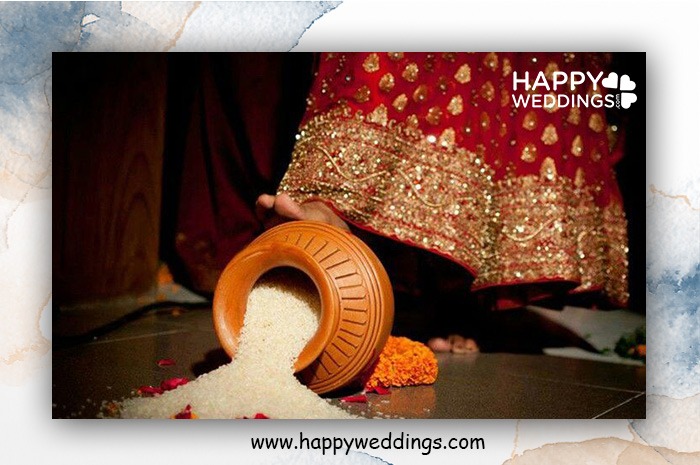
Image Courtesy: Pinterest
The couple is given a warm welcome at the groom’s place. The bride is asked to place her foot on a bowl containing milk. Then only she enters the house by breaking a traditional lamp made out of clay. There are certain rituals that the couple should follow, which they do without fail.
Also Read: Goan Wedding and its Colorful Rituals and Traditions!!
Khuba Khubi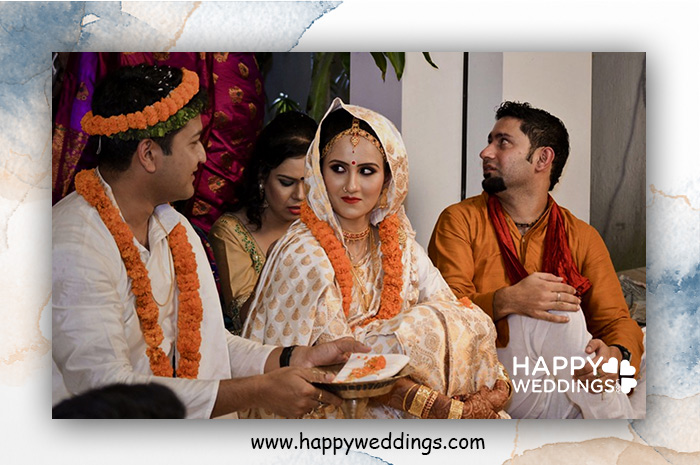
Image Courtesy: amplireach.com
The next day after the wedding, the couple arrives at the bride’s house known as Khuba Khubi. A priest will be present during the time, and he will narrate them a story of two goddesses, Khuba and Khubani. Once the story is over, the couple seeks blessings from the Gods.
Aathmangla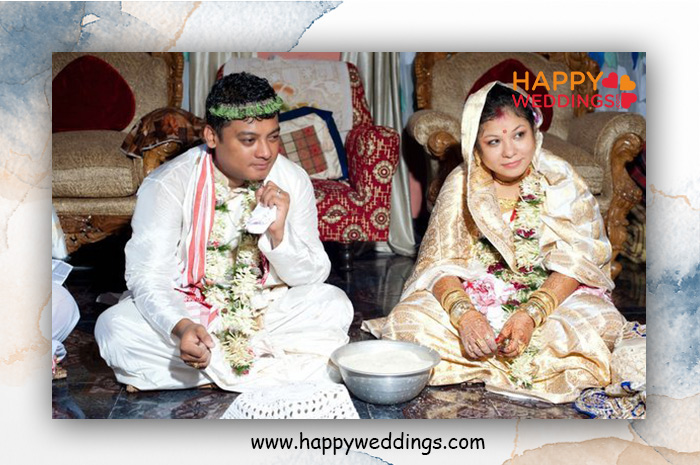
Image Courtesy: pranabsutradhar
The couple will visit the bride’s paternal home on the eighth day of the wedding. All the relatives will be present at that time, and the couple is served a delicious lunch.
Now, go for your Assamese wedding by finding your best Assamese partner. Register now for free at Happyweddings.com.